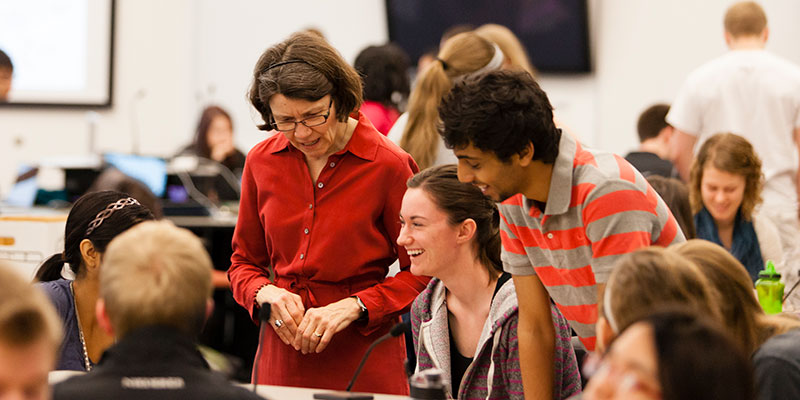In classrooms at the U of M and across the country, Sue Wick is part of initiative to help train the next generation of STEM educators.

Sue Wick’s efforts to expand active learning go further than the boundaries of campus. As a member of the American Society of Cell Biology’s Education Committee, she and fellow committee members, along with partners from other professional societies in the biosciences, recently launched a new initiative, the Promoting Active Learning and Mentoring (PALM) Network. Funded by the National Science Foundation, this effort works to build connections with undergraduate STEM educators across the country, encouraging active learning in classrooms by offering support and educational opportunities through fellowships and network resources.
“We know that a lot of people want to do more active learning and teaching that is aligned with the Vision and Change documents that have come out of AAAS, but they just don’t have the support,” says Wick. “They have vague ideas of how to do it, but they might need someone to hold them accountable and serve as a resource to become a better educator.”
Wick, as well as colleagues at ACSB, realized that outside of education programming at annual meetings, there needed to be additional opportunities for people interested in active learning to enhance their teaching skills in undergraduate classes. Through the PALM Network, individuals can apply for fellowships, working with another faculty member who has more experience in active learning. As part of the program, fellows will work with their mentors to create an active learning based module for one of their classes and implement it, as well as take part in other educational training in this one-on-one setting.
“We hope this program gives PALM Fellows the confidence they need to continue to do this on their own,” Wick says. “It’s a matter of getting people to realize that they can learn the skill of teaching this way and that they can help others do it, as well.”
In addition to offering this network to STEM educators across the country, Wick sees this program as a unique opportunity to expand what she sees as the future of education in STEM classrooms.
“There is extensive evidence that active learning helps students master course concepts and science process skills, reduces failure rates and is particularly helpful for leveling the playing field for under-represented minorities, women and first-generation students,” says Wick. “In light of this, and as universities and colleges seek to improve retention and graduation rates for all students, I think active learning as a whole is going to grow and explode.” —Lance Janssen